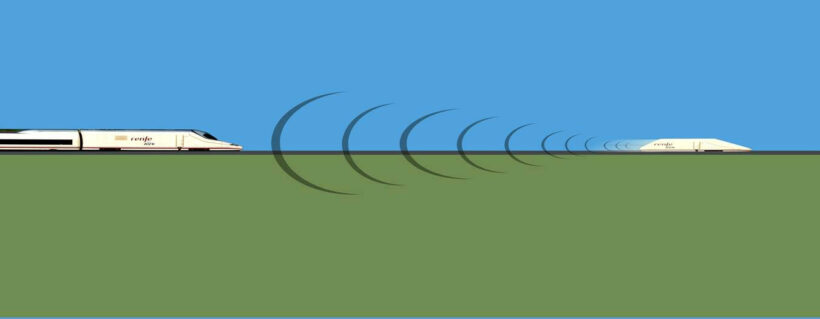The first steam locomotives travelled at a maximum speed of eight kilometres per hour; today’s locomotives exceed 300 kilometres per hour.
By Alberto Vázquez-Figueroa
Rail transport has improved a lot in less than two hundred years, but unfortunately, there is a point in which it has not improved in the same proportion: accident prevention.
In recent times there have been several accidents with a painful and considerable number of victims and a high economic cost.
Almost all were due to an obstacle collapsing the track or a landslide caused by rainfall and in no case did the train drivers have a chance to avoid the collision as their speed was excessive in relation to the reaction time and space needed to bring the convoy to a halt.
It should not be considered a “human failure” as it is directly related to the lack of “space-time” when stopping, as the same reflexes cannot be demanded of a train driver driving a train at 300 km/hour as those required of those driving at 100 km/hour.
Unfortunately, human beings and their ability to react are still the same, because man has not improved his physical conditions at the same rate as machines. Nor does a train brake in the same amount of space at 300 kilometres per hour as it did at 100 kilometres per hour.
In order to obtain the necessary extension of this “space-time” of reaction, I have designed what I have called the “High Speed Explorer”.
Essentially, its operation is that of a locomotive of similar characteristics to that of the train it will precede, but of much smaller size.
It is not manned, since it is actually a shuttle that acts as a “pilot fish” since, by means of television cameras and alarm devices, it keeps the driver informed of the state of the track at all times.
The distance that separates the train from the “Explorer” is determined by the speed of the train and the space that the train will need to stop without colliding with the obstacle.
The computer programmes which are connected between the locomotive and the “Explorer” determine at all times what speed, and therefore how far apart they should be, in order to avoid any risk of overtaking and to ensure smooth braking.
The system is automated and connected to the “Central Control of the Railway Network”, but the driver is always able to instruct the “Explorer” how to act when approaching a point change, an intermediate station or an unscheduled stop.
When the train is about to enter the final station of its journey, the “Explorer” is diverted to a parking area where it waits until the moment when it has to leave to take the lead of a new train.
It must be painted in bright colours and emit a high-pitched alarm beep towards the front in such a way that it does not disturb passengers but serves to announce its arrival followed by the arrival of the whole train, which also prevents a large number of accidents at level crossings without barriers and at stations where passengers are reckless enough to cross the tracks.
It is equipped with a tracker capable of detecting the slightest alteration in its route by checking it metre by metre against the information it has previously stored in its computer system. This highly accurate visual memory is at the heart of its operation, because as soon as it detects the slightest difference between what it “has already seen” and what it “sees”, it warns of danger, especially in places where there is a possibility of a terrorist attack.
It also has a radio signal jammer that prevents a long-distance attack during the time it takes for the train to pass.
As they both advance at the same speed, their braking capacity will be greater the lower their mass is in relation to that of the train (fi=ma), and as they are unmanned and all their elements are restrained, they do not suffer excessively from the effects of inertia.
In the event of an emergency, it releases a large, highly visible parachute which helps it to stop more easily.
Its cost can be estimated at around €15,000, which is very low in relation to its performance, and it should be subsidised by the insurance companies who are the main beneficiaries of its services as it will save them huge sums in compensation payments.
Expediente nº12/RTPI-004499/2010
This article was first published by El Mundo in 2013 and was translated and republished with authorization from the author.






